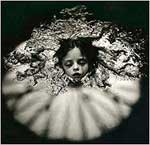Another view of Iraq Waco, from the Belfast Telegraph:
The cult denied it was involved in the fighting, saying it was a peaceful movement. The incident reportedly began when a procession of 200 pilgrims was on its way, on foot, to celebrate Ashura in Najaf. They came from the Hawatim tribe, which lives between Najaf and Diwaniyah to the south, and arrived in the Zarga area, one mile from Najaf at about 6am on Sunday. Heading the procession was the chief of the tribe, Hajj Sa’ad Sa’ad Nayif al-Hatemi, and his wife driving in their 1982 Super Toyota sedan because they could not walk. When they reached an Iraqi army checkpoint it opened fire, killing Mr Hatemi, his wife and his driver, Jabar Ridha al-Hatemi. The tribe, fully armed because they were travelling at night, then assaulted the checkpoint to avenge their fallen chief.
Members of another tribe called Khaza’il living in Zarga tried to stop the fighting but they themselves came under fire. Meanwhile, the soldiers and police at the checkpoint called up their commanders saying they were under attack from al-Qai’da with advanced weapons. Reinforcements poured into the area and surrounded the Hawatim tribe in the nearby orchards. The tribesmen tried – in vain – to get their attackers to cease fire.
American helicopters then arrived and dropped leaflets saying: “To the terrorists, surrender before we bomb the area.” The tribesmen went on firing and a US helicopter was hit and crashed killing two crewmen. The tribesmen say they do not know if they hit it or if it was brought down by friendly fire. The US aircraft launched an intense aerial bombardment in which 120 tribesmen and local residents were killed by 4am on Monday.
Here.



















